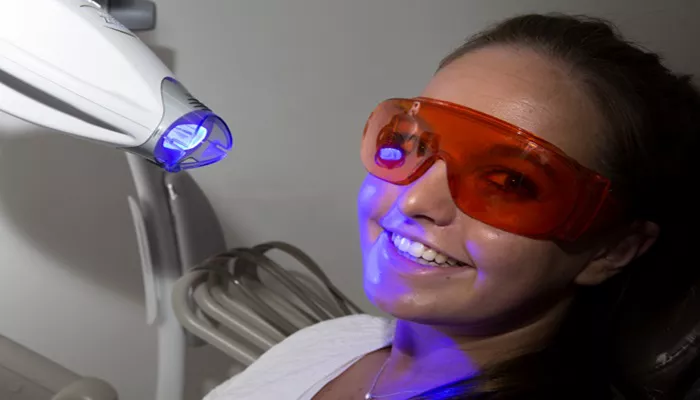Teeth whitening has become a popular dental procedure, and one of the most commonly used methods involves the application of LED light in combination with whitening agents. This article aims to provide a detailed, professional introduction to how LED light is used in teeth whitening, with clear subtitles and a popular science style to help readers understand the process better.
What is LED Light in Teeth Whitening?
LED light in teeth whitening refers to the use of light-emitting diode (LED) technology to activate whitening agents on the teeth. This process involves applying a gel containing hydrogen peroxide or another bleaching agent to the teeth and then exposing them to LED light of a specific wavelength. The interaction between the light and the gel triggers a chemical reaction that breaks down stains and discolors the teeth, restoring their natural whiteness.
How Does LED Light Work in Teeth Whitening?
Chemical Reaction Activation
The key to LED teeth whitening lies in the activation of the whitening agent by the LED light. The gel applied to the teeth contains peroxide, which is a powerful oxidizing agent. When exposed to LED light, the peroxide molecules are excited and break down into smaller, more reactive components. These reactive components penetrate into the tooth enamel and dentin, breaking down the stains and discolored molecules within the teeth.
Peroxide’s Role
Peroxide is the active ingredient in most teeth whitening gels. It works by breaking down into oxygen radicals, which are highly reactive and can break chemical bonds within stains. The LED light accelerates this process by providing the energy needed to activate the peroxide molecules. This results in a faster and more effective whitening action compared to using the gel alone.
Benefits of LED Teeth Whitening
Fast and Efficient
One of the primary benefits of LED teeth whitening is its speed and efficiency. The entire process can be completed in a single visit, usually lasting between 30 minutes to an hour. This is significantly faster than other whitening methods, such as using whitening strips or trays, which can take weeks or even months to achieve similar results.
Safe and Non-Invasive
LED teeth whitening is a non-invasive procedure that does not require any drilling or grinding of the teeth. The gel applied to the teeth is safe and has been used in dental practices for many years. The LED light used is also low-intensity and poses no risk to the teeth or surrounding tissues.
Long-Lasting Results
The results of LED teeth whitening are long-lasting, with many patients experiencing a significant improvement in their tooth color for up to two years or more. This makes it an excellent option for those looking for a long-term solution to tooth discoloration.
Understanding the Process in Detail
Preparation
Before undergoing LED teeth whitening, patients will undergo a thorough dental examination to ensure their teeth and gums are healthy. This includes checking for cavities, gum disease, and other potential issues that could affect the success of the procedure. If any problems are found, they will be treated before the whitening process can begin.
Application of the Gel
Once the teeth are deemed suitable for whitening, the dentist will apply a protective gel or shield to the gums and lips to protect them from the whitening agent. Next, the whitening gel is applied to the teeth using a small brush or syringe. The gel is usually left on the teeth for a specific period, usually around 15-20 minutes, to allow it to penetrate and break down the stains.
Exposure to LED Light
After the gel has been applied, the patient will sit under an LED light for a set period. The light is positioned close to the teeth and shines directly onto them. The duration of light exposure can vary depending on the severity of tooth discoloration and the desired level of whitening. During this time, the patient may experience a slight tingling or warming sensation on their teeth, which is normal and indicates that the whitening process is occurring.
Post-Treatment Care
After the LED light exposure, the whitening gel is removed from the teeth, and the teeth are rinsed thoroughly. Patients are advised to avoid staining foods and drinks for a few days after the procedure to maximize the results. Additionally, they may be given a take-home whitening kit to use periodically to maintain their new tooth color.
Popular Science Explanation: Breaking Down the Process
To better understand how LED teeth whitening works, let’s break down the process into simpler terms.
Chemical Reaction: When peroxide-based gel is applied to the teeth, it begins a chemical reaction that breaks down stains.
However, this reaction occurs slowly without external activation.
Light Activation: The LED light provides the energy needed to accelerate the chemical reaction within the gel. The specific wavelength of the light interacts with the peroxide molecules, causing them to break down into smaller, more reactive components.
Stain Removal: These reactive components penetrate into the tooth enamel and dentin, breaking down the stains and restoring the teeth’s natural whiteness. The process is similar to how bleach works on stains on clothes but is tailored specifically for teeth.
Results: The results of LED teeth whitening are immediate and noticeable. Patients can see a significant improvement in their tooth color after just one treatment. With proper care and maintenance, the results can last for years.
Conclusion
LED teeth whitening is a safe, effective, and efficient way to improve the appearance of discolored teeth. By using LED light to activate peroxide-based whitening agents, dentists can achieve fast and long-lasting results. While the process may sound complex, it is based on simple chemical and physical principles that have been refined and optimized over the years.
If you are considering teeth whitening, talk to your dentist about whether LED teeth whitening is the right option for you.
They can assess your teeth and gums, discuss the benefits and risks, and help you achieve the smile you desire.
Related topics:

